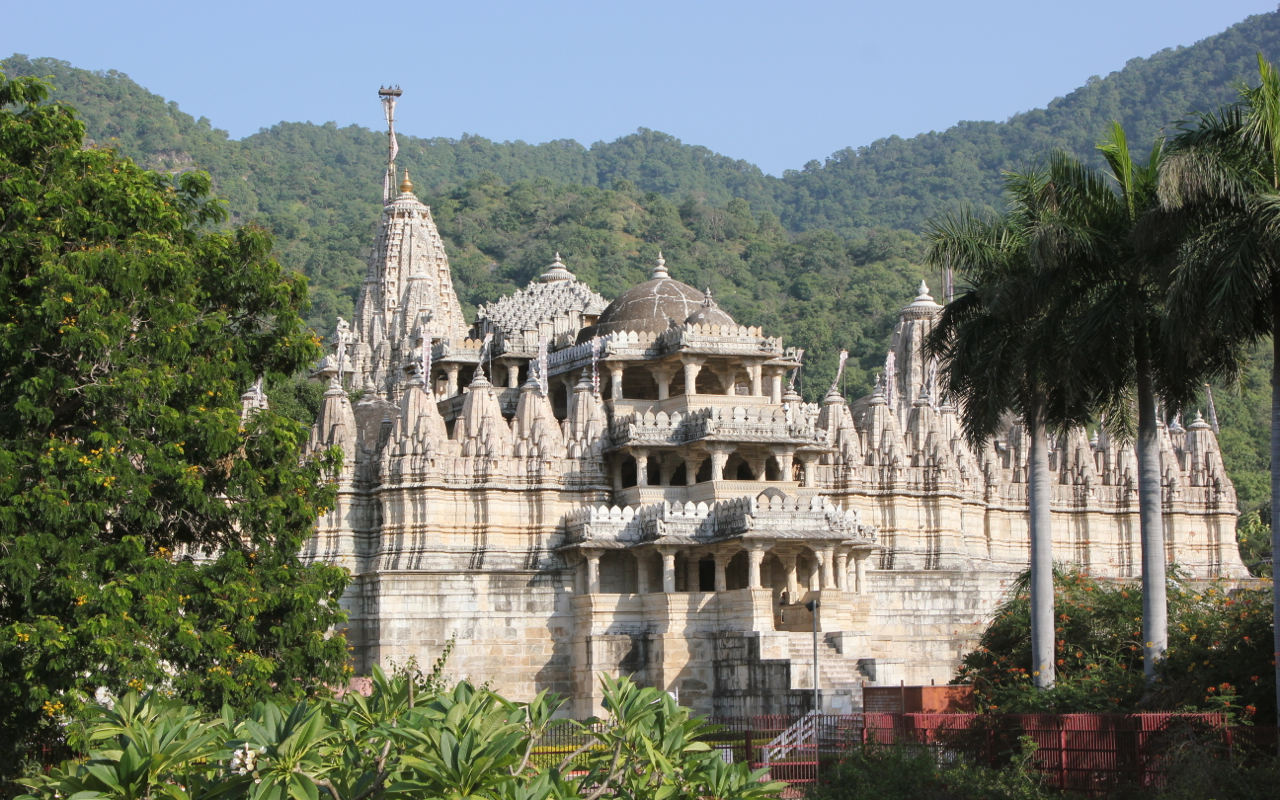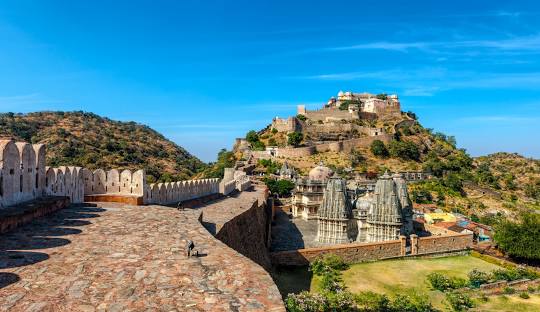


According to a Sanskrit text by the name Soma-Saubhagya Kavya and a copper-plate inscription discovered within the temple complex, this temple dates back to the early fifteenth century. An architectural marvel in its own right, the Ranakpur Temple came from Dhanna Shah, a Porwal from Ghanerao, under the patronage of Rana Kumbha, the then ruler of Mewar.
Legend has it that Dhanna Shah, a prosperous merchant and prominent minister in the court of Rana Kumbha, one night dreamt about a celestial vehicle. The next morning, he woke to a burning determination of building a temple in the shape of a vehicle, to give expression to his vision.
Ahmad Shah II of Gujarat attacked the fort in 1457, but found the effort futile. There was a local belief then that the Banmata deity in the fort protected it and hence he destroyed the temple. There were further attempts in 1458–59 and 1467 by Mahmud Khalji, but it also proved futile. Akbar's general, Shahbaz Khan, attacked this fort in October 1577 and after the siege of 6 months, he was able to capture the fort in April 1578. But it was recaptured by Pratap in 1583. In 1818, an armed band of sanyasis formed a garrison to protect the fort, but was convincedclarification needed] by James Tod and the fort was taken over by the British and later returned to Udaipur State. There were additions made by Maharanas of Mewar, but the original structure built by Maharana Kumbha remains. The residential buildings and temples are well-preserved. The fort is also known to be the birthplace of Maharana Pratap.
Read more
Located in the Aravalli Hills of Rajasthan and named for its yellow-coloured soil (reminiscent of turmeric), Haldighati is an indelible part of history—immortalised as the site of the famous battle between the King of Mewar, Maharana Pratap, and Emperor Akbar's forces in 1576.
Maharana Pratap, the legendary Rajput warrior-king of Mewar, rode into battle alongside his valiant horse, Chetak, epitomizing loyalty and courage on the battlefield. In a moment of unmatched heroism, Chetak carried Maharana Pratap to safety, leaping over a treacherous ravine to evade capture. Though Maharana Pratap battled bravely, his forces could not claim victory, and Chetak, died from the battle wounds just hours after aiding his miraculous exit. A memorial has been built on the very spot where Chetak died.
Welcome to the Travel Rani. We are here for help. If you have pre-sale questions just call us today!





© Travel Rani. All rights reserved 2024. Powered by: Rapsys Info Tech


